
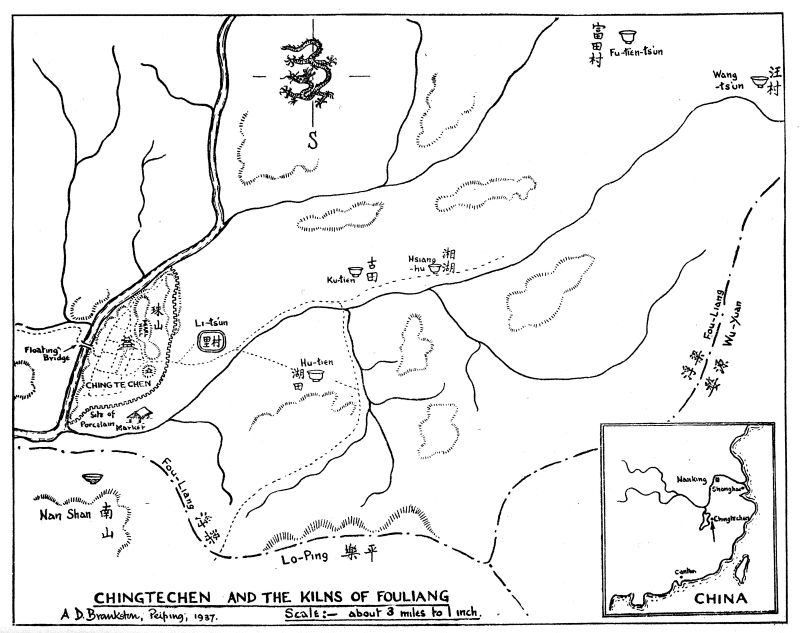
Map of Jingdezhen, Early Ming Wares of Chingtechen, A D Brankstone, Peiping 1937, page 54.
On his map 'Huangnitou' and 'Baihuwan' are there but called 'Ku-tien' and 'Hsiang-hu' respectively.
The Huangnitou and Baihuwan kiln areas are in the eastern outskirts of Jingdezhen. The area is located about 15 km due east of Zhushan and the center of Jingdezhen along the present railroad. We first made it to the Huangnitou kiln area. It includes three piles of ceramic waste and occupies an area of about 50,000 sqm. It is today located behind the Huangnitou elementary school where over a hundred children were doing gymnastics to music outdoors when we arrived. Complete chaos broke out when they saw us tall europeans. It was a sunny day and about 30-35 centigrade in the blazing sun.
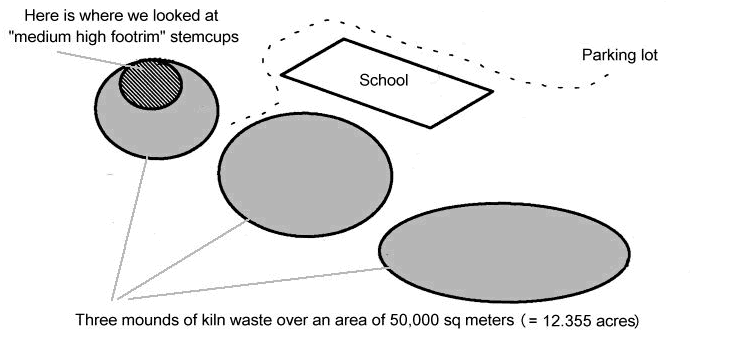
Fig. 6. Huangnitou kiln area is today located behind the Huangnitou elementary school where over a
hundred children were doing gymnastics to music when we walked past.
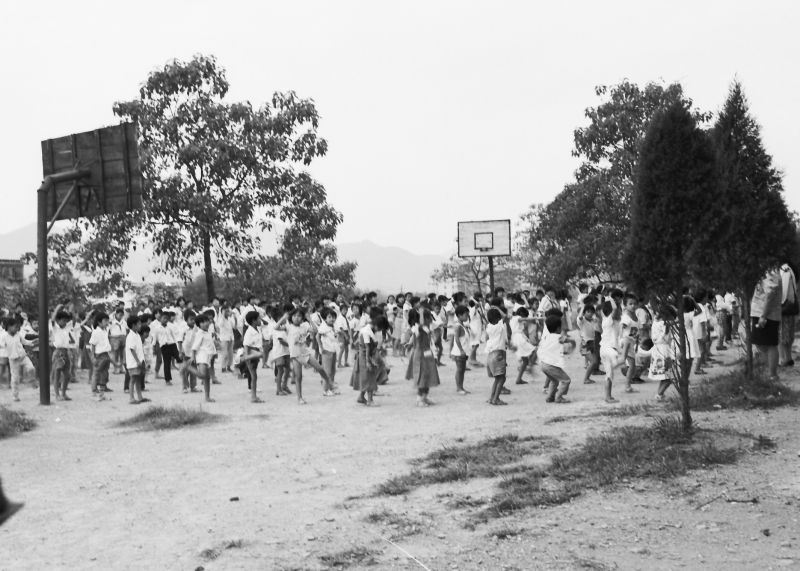
Huangnitou elementary school
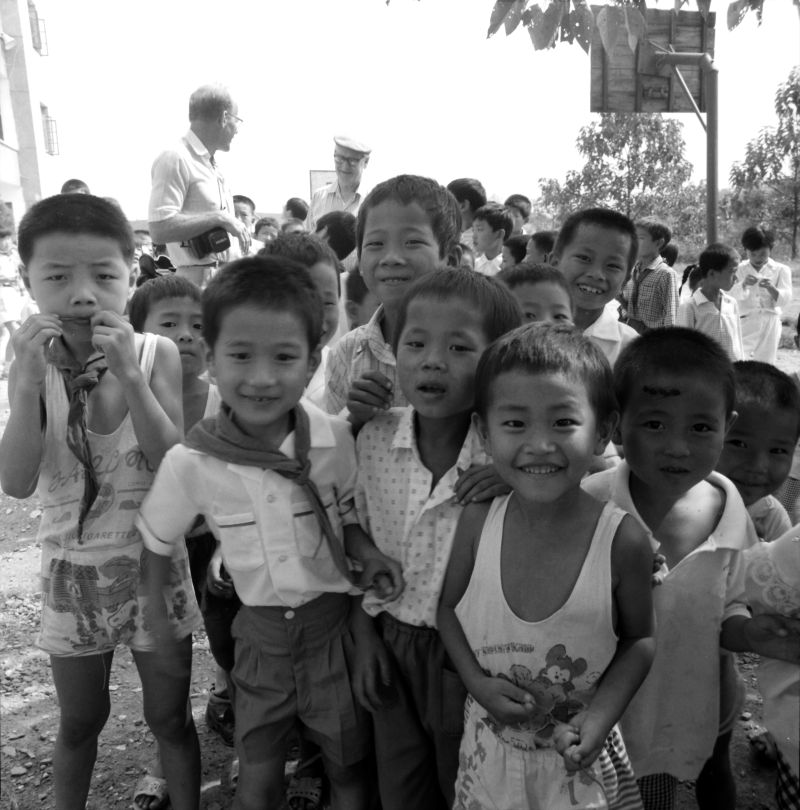
Fig. 7. From organized to chaos in no time, when they discovered us.
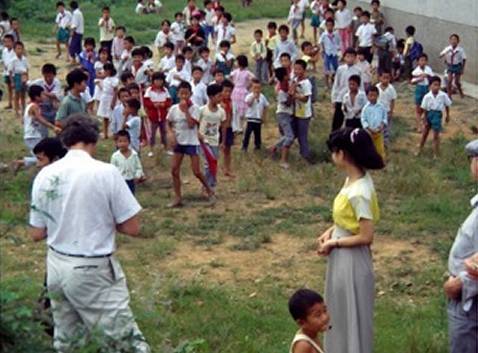
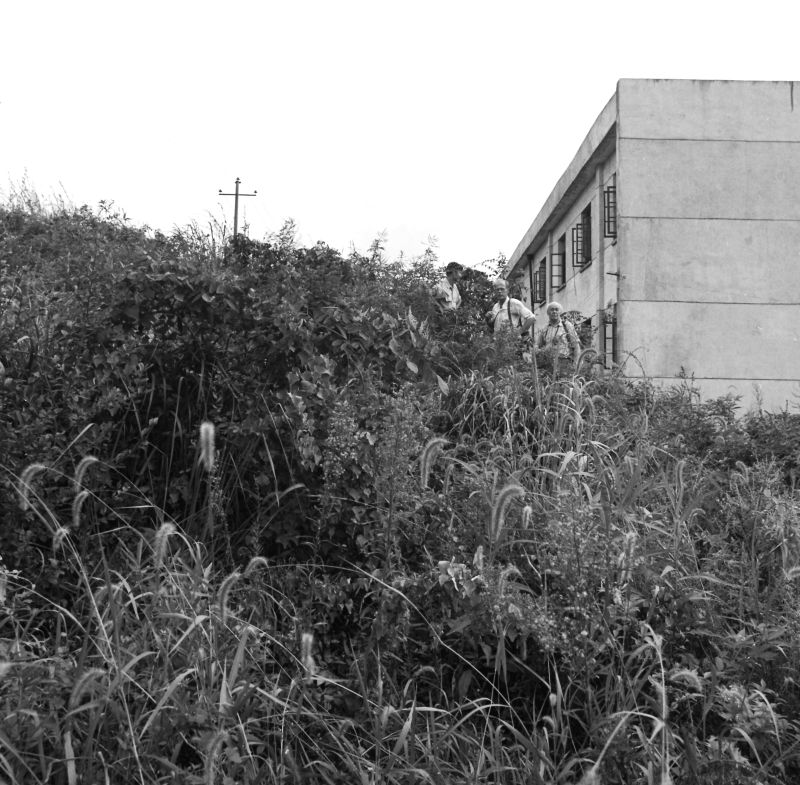
The old kiln site and its waste heap areas begun immediately behind the school.
I realized that once the kids could sneak away from under the eyes of the teachers, they would go here and play hide and seek among thousand year old porcelain shards. They would literally be walking on their own history.
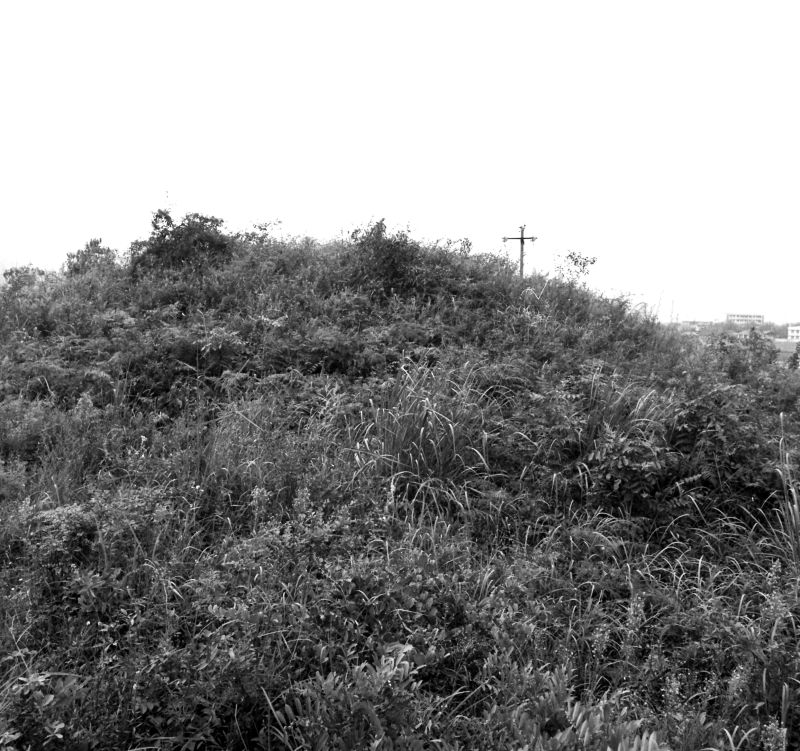
The three shard and kiln waste mounds in Huangnitou covers an area of 50,000 sq meters or 12,355 acres
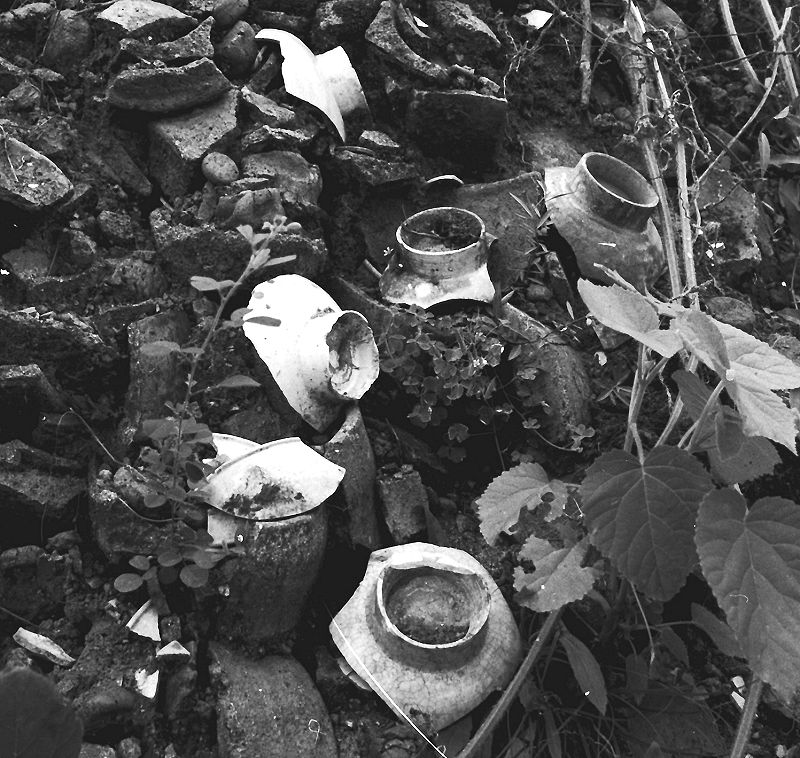
Fig. 8. This picture was taken at the point I marked with "Stem Cups" on the map in Figure 6. The place was a slope where someone had dug into it a bit to make space to fit a patio for some new houses. If these findings are from the beginning or end of Huangnitous activity period could not be determined by what we saw. You could always guess that the oldest finds are inside on the bottom level and that the latest, is on the outskirts and top level but I'd rather not guess.
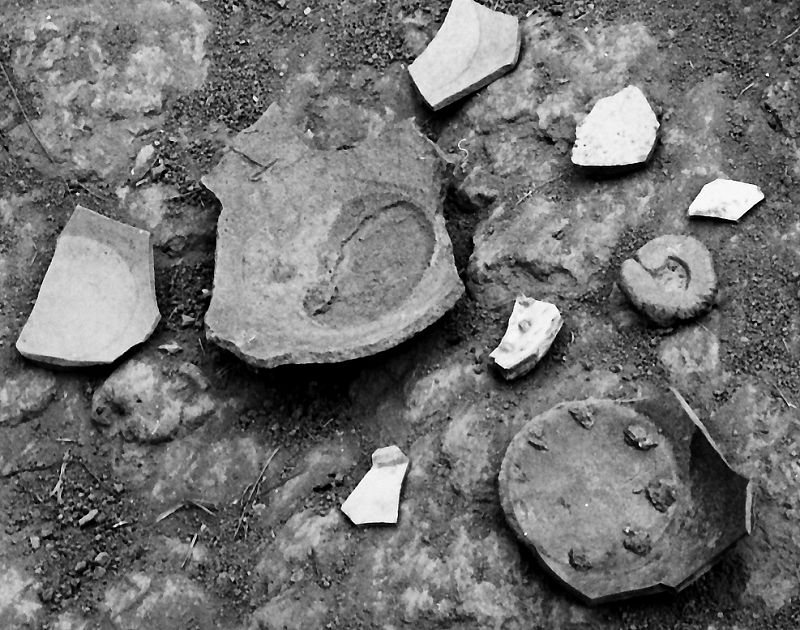
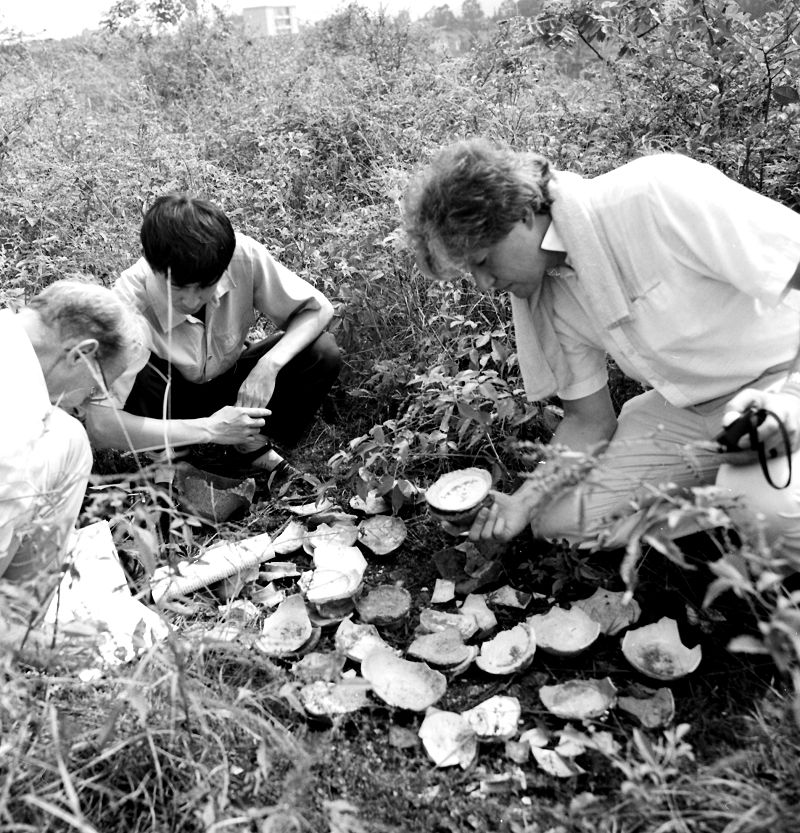
Fig. 7. On the middle one of the three heaps were thousands of stem cups of qingbai-type with carved decoration and medium-high foot ring. From the left Jarl Vansvik, Jiang Jian Xin and I. Around my neck I carry a towel brought from the hotel, to help some with the blazing sun.
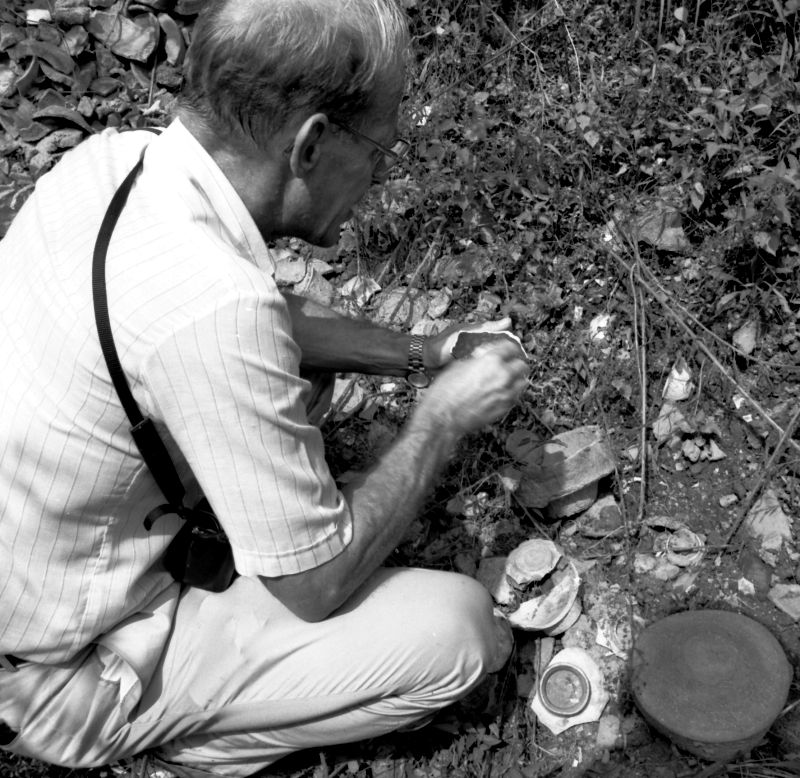
Jarl Vansvik looking at the typical half high qingbai stem cups found everywhere here. In the middle of the picture, a recessed base saggar, made to economize with the space in the kiln since the bottom would fit inside the bowl under it. Bottom right, is the base of an ordinary pot shaped saggar of a slightly larger diameter. From what we could observe ourself here, it was not possible to tell if the recessed bottom saggars would have been fired inside a pot shaped one.

From left to right; Jarl Vansvik, Jiang Jian Xin and Erik Engel.
Erik holding two shards of light straw to light gray colored qingbai wares with cut flower decoration.

A close-up of what we were looking at. Top left, a recessed base saggar for upright standing firing of stem cups. The wares is a light colored qingbai ware with simple flower scroll decorations under the glaze, if any. The bases are 'half high' stem cups. They are fired upright on wads or rounded setters.
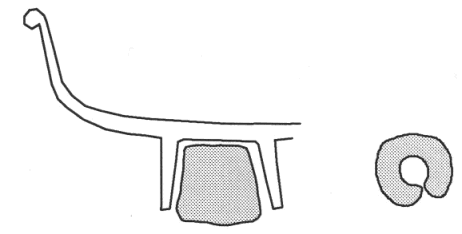
Fig. 9. A common what we called "half height" stem cup with folded edge from Huangnitou kiln area.
Those with high foot was fired on a wad, those with a low foot was fired on a ring.
We drove further east about 5 km along a high stone wall. Baihuwan was one more kiln area, about 30 000 sqm. The mound is 7-8 meters high. We found similar items here as in Huangnitou. Maybe the foot was slightly lower and wider. The heat in the sun was exhausting and we were now very tired. In this area there were a few places where someone had hacked and dug a little into the hillside. Here we saw white stem cups with wide and with low foot. Both appeared to be fired on a wad, not a ring. Those with low foot occurred with folded rim and narrow foot. There were Ding Yao-copies and green Zhejiang (Chekiang) celadon looking shards with white body, and black wares.
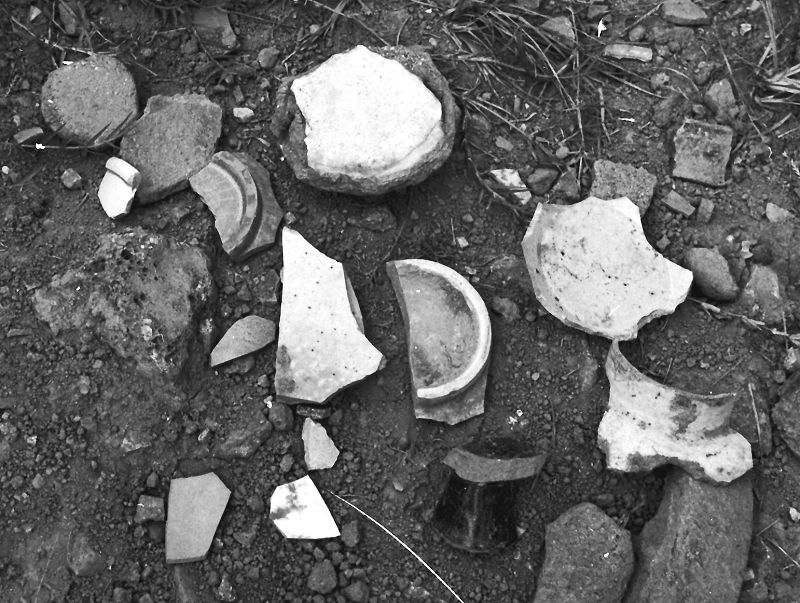
Notice to self, no upside down firing - no unglazed top rims, no stepped setters. All points towards Northern Song.
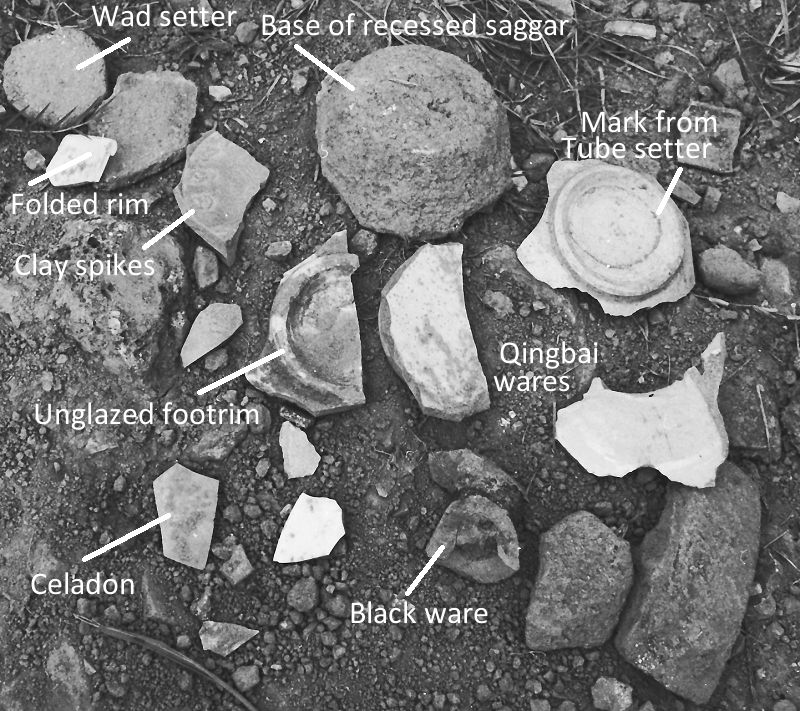
The impression here and in other places, as for Hutian that from here was across the river, "everything seemed to have been made everywhere". It appeared as, if there had been a demand for something in particular, the local potter would have whipped up a version of it. To bee too certain about anything both as for a date as location seemed like something that you should be careful with. In general, sure, but to be too sure about in which mud pit a particular bowl would have been made in, is moot.
There were green, white and black wares, the green and white, with and without clay wads, low and high foot rims occurred. No blue and white. Especially common was a kind of half-high stem cup with its top rim folded around itself to provide extra strength.
A smaller model was decorated with an approximately 5 mm large button shaped pearl in the bottom of the cup. The bowls with high foot rim was fired on a clay wad; those with low foot rim were fired on a ring setter. In one place we found white bowls with half-height foot rim in three different sizes. Only the smallest had a pearl in the bottom inside.

After visiting the last waste mound in Baihuwan, I admired the lush greenery and how the locals had made use of any spot feasibly to grow food. It appeared wise and I felt this was long time thing to do in-between the pottery workshops. No man lives by pots alone.
From the upright firing technique (yangshao) that precedes the mass production era of mid Song to Yuan dynasties, plus the green wares that had been fired in stacks separated by small wads of clay spikes, it seems like this area dates to around Five Dynasties (907-960) into the Northern Song (960-1127). From around the mid Northern Song people from the north started to migrate southwards and brought with them new technology for more efficient use of kiln space plus an increased population creating new business opportunities. These more carefully fired pieces suggests an earlier date than Southern Song.
Both the Huangnitou and the Baihuwan kiln areas have basically the same kind of wares as far as we can see which suggests they are both from about the same timeframe. Nothing that I could see here had been fired upside down (fushao).
To me it looks like the more modern kiln technology that seems to have been pioneered in the Hutian area just put these kilns out of business.
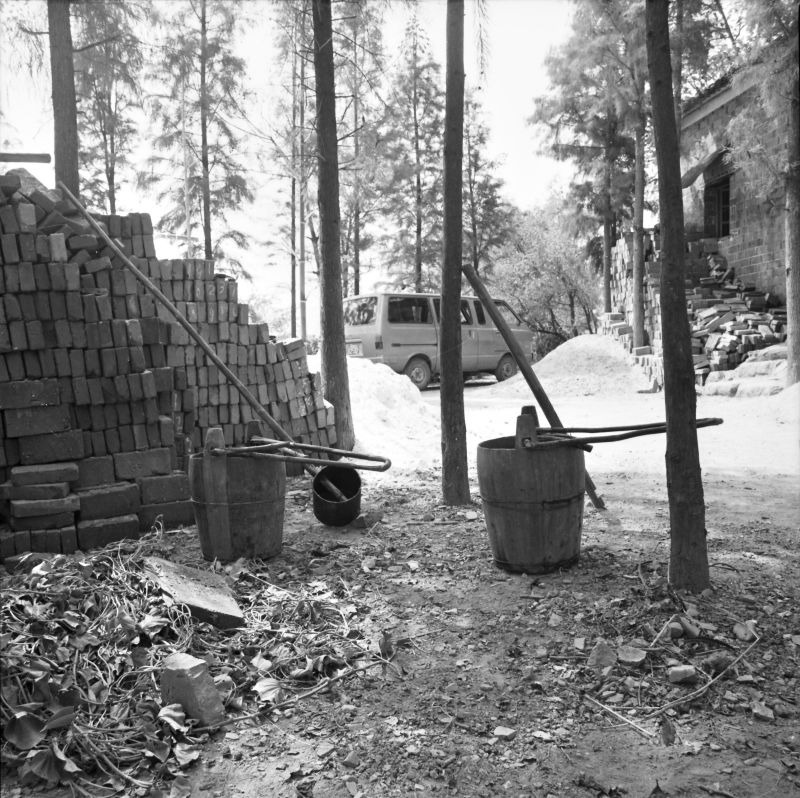
At this point we were giving up due to the tropical heat and us insisting on spending time directly in the sunlight, 'since that's where the shards are' so we decided to go for some refreshment. Our driver was surprised that we were perfectly fine with finding any place that the locals were ok with, and eventually we got some two ice cold soda's in a small village just outside of Jingdezhen.
We mostly gave up but looked around a bit further, bought two ice cold soda in a small village in the middle of the country. On the way home we went out of gasoline outside Jiangxi Ceramic Research and our driver needed to do some interesting and most dangerous improvisations to get us all going again. During the break we happened to meet Xia Jinrong and his wife. Agreed to visit them on Monday. Director Xin, one of China's most famous modern potters were home, and wanted to meet with us.